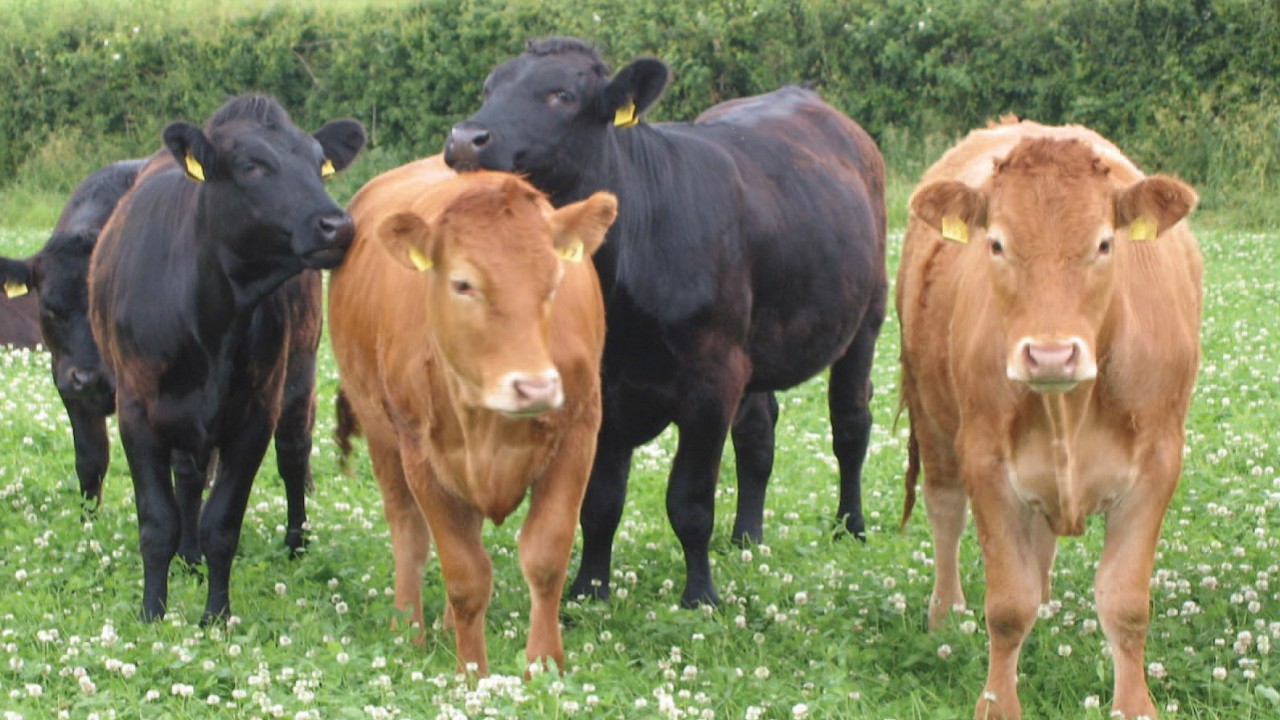Farmers are being encouraged to consider how clover swards could save them money as the Covid-19 pandemic puts many farm businesses under extreme pressure.
Ruth Ruddell, an advisor from the Sustainable Land Management branch at the College of Agriculture, Food and Rural Enterprise (CAFRE), said: “Legumes have root nodules which contain rhizobia bacteria which are very beneficial as they can convert nitrogen gas from the atmosphere to a plant-available form of nitrogen during the process of ‘fixation’.
This can supply approximately 150kg N/ha/year (equivalent to approximately 550kg of CAN) – a cost-saving of roughly £100-115/ha.
Combining the efficient use of slurry and manures with nitrogen fixation by a clover sward can help to improve production efficiency and reduce the use of artificial fertiliser, therefore, improving farm profitability.
Ruddell added: “Research by the Agri-Food and Biosciences Institute (AFBI) has shown that a perennial ryegrass and white clover sward can be as productive as grass-only swards receiving medium to high fertiliser nitrogen as it can fix approximately 150kg N/ha/year.
In a study carried out at AFBI Hillsborough, a grass clover sward which received no nitrogen fertiliser had the same stock carrying capacity as a grass-only sward fertilised with 170kg N/ha.
White vs. red clover
Other AFBI studies have found that with low levels of slurry nitrogen applied, a perennial ryegrass and white clover mixture outperformed a ryegrass-only sward.
White clover varieties are particularly suited to livestock farms in Northern Ireland, providing an extended grazing season at the back-end of the year; however, red clover is best for cropping-silage systems.
“All swards benefit from having soil pH, P and K status at optimum levels but legumes are particularly sensitive to lower levels. Aim for a pH of 6.3 or higher as this is very important for the maintenance of legumes.
“As much of Northern Ireland is upland and often has quite acidic soil, not all types of clover are suitable so be sure to check the recommended varieties on the BGS grass and clover list. Clover can remain productive and persistent in swards for four to five years depending on management.
“For grass/white clover swards the optimum clover content of the sward over the season is 30% in the dry matter. However, this figure will vary throughout the season from 20% in spring to 60% in late summer.”
Yield benefits of clover in swards
Swards with a high clover content can improve animal health and performance. Worm burden is reduced especially when mixed grazing and trace element availability is increased from the clovers’ deep roots.
Clover swards maintain their quality for longer compared to grass-only swards, dropping about two units of digestible value each week.
This will contribute to greater herbage intake and up to 10% higher liveweight gain in cattle; 20% higher milk yield from dairy cows; and up to 25% higher liveweight gain in lambs.
Greater liveweight gains cuts the days to finishing time, thereby reduces the carbon footprint per kilogramme of produce.
Precautions
“Bloat is not generally a problem on clover swards in Northern Ireland. However, to reduce the risk further, move stock onto dry grass and avoid letting animals gorge by feeding roughage like hay or straw before moving into a clover sward,” Ruddell highlighted.
Grazing sheep before cattle also reduces the risk of bloat for cattle. Flock keepers also should be careful not to graze ewes on red clover swards for a period of four weeks before and after tupping.
This is due to its phyto-oestrogen content, which can cause poor reproductive performance; however, white clover has no issues with phyto-oestrogens.

